
Tartaric acid is a white, crystalline organic acid that occurs naturally in many fruits, most notably in grapes but also in tamarinds, bananas, avocados, and citrus. Its salt, potassium bitartrate, commonly known as cream of tartar, develops naturally in the process of fermentation. Potassium bitartrate is commonly mixed with sodium bicarbonate and is sold as baking powder used as a leavening agent in food preparation. The acid itself is added to foods as an antioxidant E334 and to impart its distinctive sour taste. Naturally occurring tartaric acid is a useful raw material in organic synthesis. Tartaric acid, an alpha-hydroxy-carboxylic acid, is diprotic and aldaric in acid characteristics and is a dihydroxyl derivative of succinic acid.
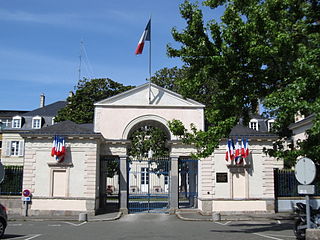
Mayenne is a landlocked department in northwest France named after the river Mayenne. Mayenne is part of the administrative region of Pays de la Loire and is surrounded by the departments of Manche, Orne, Sarthe, Maine-et-Loire, and Ille-et-Vilaine.
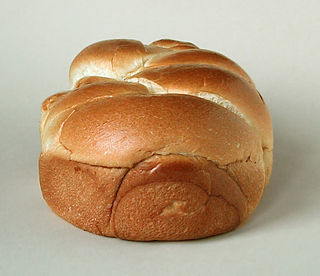
Brioche is a pastry of French origin whose high egg and butter content gives it a rich and tender crumb. The chef Joël Robuchon described it as "light and slightly puffy, more or less fine, according to the proportion of butter and eggs". It has a dark, golden, and flaky crust, frequently accentuated by an egg wash applied after proofing.
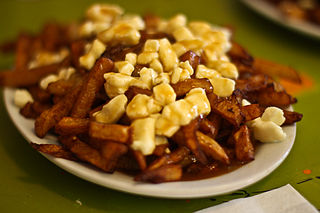
The cuisine of Québec is a national cuisine in the Canadian province of Québec. It is also cooked by Franco-Ontarians.

Cox's Orange Pippin, in Britain often referred to simply as Cox, is an apple cultivar first grown in 1825 or 1830 at Colnbrook in Buckinghamshire, England, by the retired brewer and horticulturist Richard Cox.

Swiss cuisine is an ensemble of national, regional and local dishes, consisting of the ingredients, recipes and cooking techniques developed in Switzerland or assimilated from other cultures, particularly neighboring countries. The diversity and comprehensiveness of Swiss gastronomy reflects the linguistic, cultural and geographical diversity. The climate of Switzerland allows for a large variety of terroirs, and therefore a wide range of indigenous food, from simple cereals to refined products like cheese and wine.
An entrée, in modern French table service and that of much of the English-speaking world, is a dish served before the main course of a meal. Outside North America and parts of English-speaking Canada, it is generally synonymous with the terms hors d'oeuvre, appetizer, or starter. It may be the first dish served, or it may follow a soup or other small dish or dishes.

Kompot or compot, as prepared in Central and Eastern Europe and West Asia, refers to boiled fruits served either as a drink or a dessert depending on the region. When served as a dessert, it is essentially identical to the French compote, which is where the term "kompot" originates from. When served as a drink, it is also known as vzvar (взвар) or uzvar (узвар), from a Slavic root word meaning "to boil".

A comparison of apples and oranges occurs when two items or groups of items are compared that cannot be practically compared, typically because of inherent or fundamental differences between the objects.

Swiss chocolate is chocolate produced in Switzerland. Switzerland's chocolates have earned an international reputation for high quality with many famous international chocolate brands.

Pleudihen-sur-Rance is a commune in the Côtes-d'Armor department of Brittany in northwestern France.

Botanical illustration is the art of depicting the form, color, and details of plant species. They are generally meant to be scientifically descriptive about subjects depicted and are often found printed alongside a botanical description in books, magazines, and other media. Some are sold as artworks. Often composed by a botanical illustrator in consultation with a scientific author, their creation requires an understanding of plant morphology and access to specimens and references.
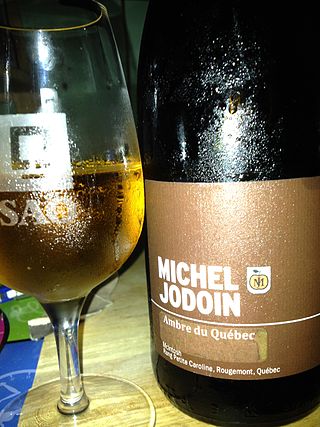
Quebec cider is crafted in the apple-producing regions of Montérégie, Eastern Townships, Chaudière-Appalaches, the Laurentides, Charlevoix and Capitale-Nationale, in Canada. The revival of cider is a relatively new phenomenon, since Quebec's alcohol regulating body, the Régie des alcools, des courses et des jeux began issuing permits to produce craft cider only in 1988. In 2008, some 40 cider makers were producing more than 100 apple-based alcoholic beverages.

The Potager du roi, near the Palace of Versailles, produced fresh vegetables and fruits for the table of the court of Louis XIV. It was created between 1678 and 1683 by Jean-Baptiste de La Quintinie, the director of the royal fruit and vegetable gardens. Today it is run by the École nationale supérieure du paysage, the grande école for landscape architects. It is officially recognized as a Remarkable Garden of France.

An apple corer is a device for removing the core and pips from an apple. It may also be used for similar fruits, such as pears or quince. An apple corer is often used when the apple needs to be kept whole, for example, when making baked apples, or when a large number of apples need to be cored and sliced, for example, when making an apple pie or similar dessert.
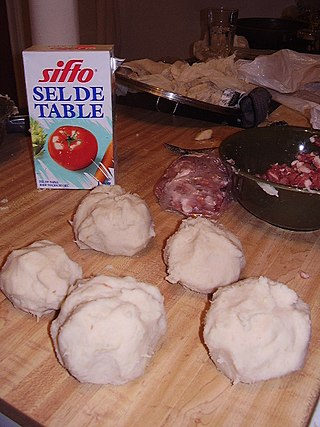
Acadian cuisine comprises the traditional dishes of the Acadian people. It is primarily seen in the present-day cultural region of Acadia.Note 1 Acadian cuisine has been influenced by the Deportation of the Acadians, proximity to the ocean, the Canadian winter, bad soil fertility, the cuisine of Quebec, American cuisine, and English cuisine, among other factors.

Siroperie Meurens is a Belgian family-owned company known for making "Le Vrai Sirop de Liège", a traditional Belgian treat resembling apple butter made of local apples, pears and dates. It is the best known sirop de Liège manufacturer, selling its products under the trademark Vrai Sirop de Liège/Echte Luikse Siroop.

The Lady is a historic apple cultivar originating in Brittany, France in at least 1628. The cultivar has gained a variety of known names in English, and is commonly referred to as Api or the Lady Apple. As a seedling, the apple has the names Helen and Highland Beauty. The cultivar is known for its miniature "tiny" size, generally less than 2 inches in diameter. Its harvest time is late August and September within the Southern United States and later in higher elevations and attitudes, up to late October and early November. They are used for "dessert, cooking, cider making, and decoration," particularly during winter holidays when they are used for decorating in Christmas wreaths and garlands.

The Api Etoile, also known as Star Apple, Pomme Etoilée, or Star Lady Apple, is an apple cultivar notable for its five prominent knobs giving it the appearance of a star. It falls into the Api family of apple cultivars.
Chocolat Kohler was a chocolate producer based in Lausanne, founded in 1830 by the Kohler brothers. It is currently a brand owned by Nestlé.


















